Whenever there is a need to consider materials for parts production, two features come to mind before others. These features are the strength and the weight of the material. This considerably increases the popularity of strong and lightweight materials in a wide variety of industries. Hence, the need for the titanium vs. aluminum comparison.
Every industry in today’s market seeks innovative ways of getting its products to market in a short period. This way, they can choose a cost-effective machining metal and maximize profit. Consequently, it became important to consider materials that can decrease overall energy consumption. Titanium and aluminum are both light materials, but for separate reasons. They also fit into different industries and applications.
Therefore, you need to understand the unique properties of each of these materials to help you make the right decision. What are the differences between the properties of aluminum and titanium? Which one should you choose for your components? Find answers to these questions as you read this article.
Comparing the Properties of Titanium and Aluminum
Both titanium and aluminum tick off the necessary boxes when it comes to excellent heat tolerance and corrosion resistance.
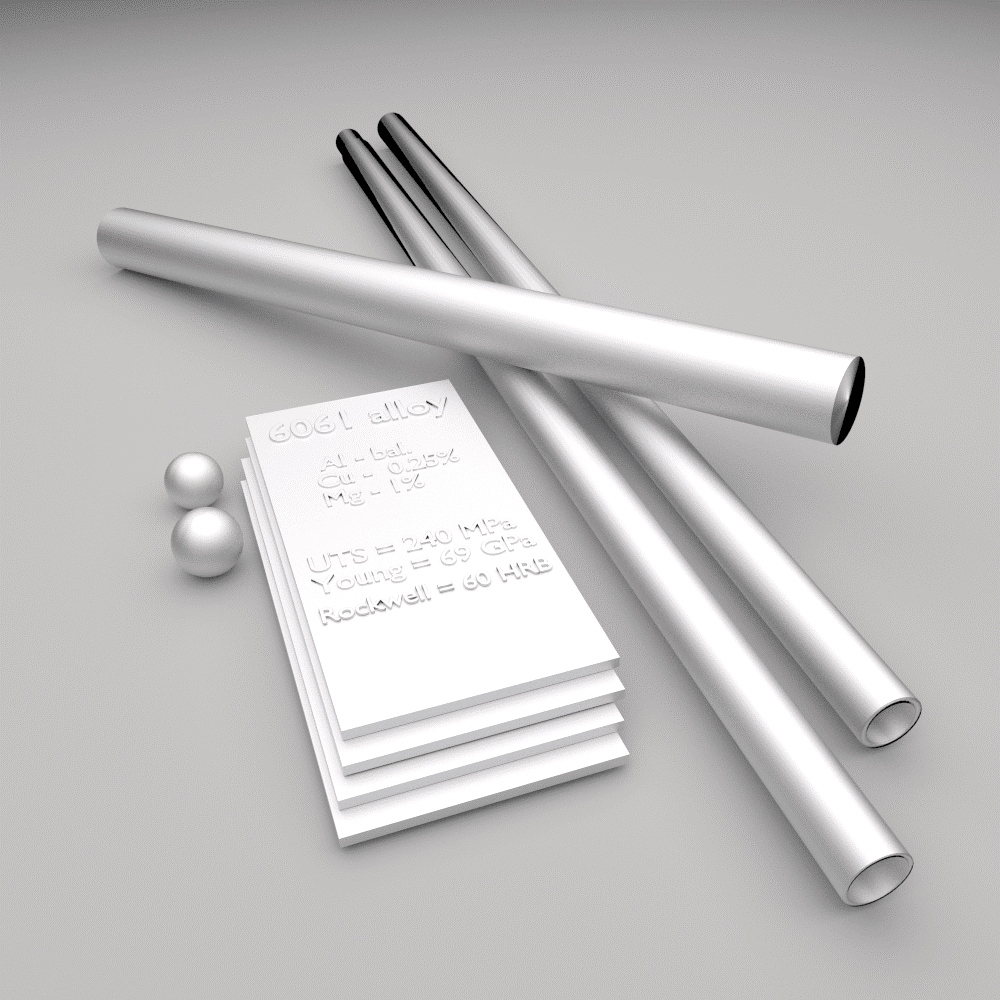
Let’s compare the properties of these materials.
Titanium vs. Aluminum: Elemental Composition
The elements present in these metals impact different characteristics on them. These include weight, corrosion resistance, and more. Titanium contains various elements such as hydrogen, nitrogen, oxygen, iron, carbon, and nickel.
Titanium is the major element, but other constituents have compositions between 0.013 and 0.5%. On the other hand, an aluminum material comes with components like silicon, magnesium, zinc, manganese, copper, chromium, iron, and many more.
Titanium vs. Aluminum: Electrical and Thermal Conductivity
Titanium is not a good conductor of electricity because it exhibits only about 3.1% of the conductivity of copper. Therefore, it is not used where good conductivity is a prime factor. However, aluminum exhibits 64% of the conductivity of copper. It is a relatively good conductor of electricity. Aluminum’s applications in heat sinks, heat exchangers, and cookware is due to its high thermal conductivity when compared to titanium.
Titanium vs. Aluminum: Weight
When measured, both titanium and aluminum are lightweight. Aluminum’s density of about 2712kg/m3 is significantly lower than that of titanium’s 4500kg/m3. Aluminum is considered lighter, and titanium is up to two-thirds heavier than its aluminum counterpart. The production process will require a lesser amount of titanium to obtain aluminum’s physical strength.
Titanium vs. Aluminum: Corrosion Resistance
While both materials have excellent corrosion resistance, manufacturers figured that titanium is more corrosion-resistant than aluminum. Titanium is more inert and has more biocompatibility with good application in many industries. Aluminum forms a layer of oxide to make more non-reactive materials.
Titanium Vs. Aluminum: Their Applications
These two metal materials for rapid prototyping and production have an extensive range of applications. Their applications give us a possible means of comparing or differentiating these metals from one another. Their applications are discussed below:
Applications of Titanium
Being one of the most common metals found on earth, titanium has uses in many industries. However, the difficulties associated with titanium material processing due to its high melting point impose additional cost implications.
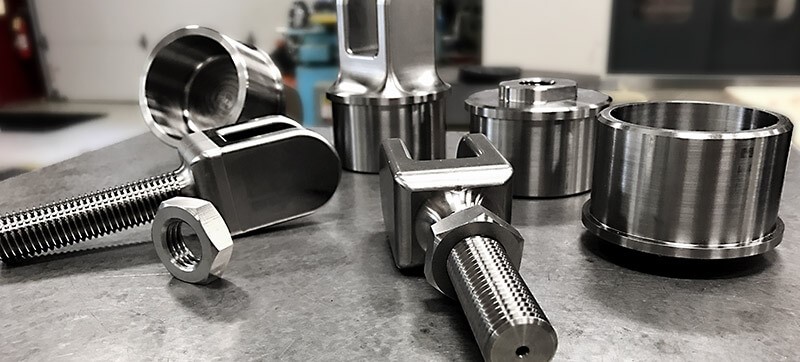
On the other hand, many companies consider titanium’s low thermal expansion and high strength, and excellent corrosion resistance. Titanium has the following applications among others:
- Aerospace industry – for producing parts such as landing gear, hydraulic systems, firewalls, and other critical structural parts.
- Healthcare sector – to produce products like dental implants, surgical implements, surgical instruments, and more.
- Consumer and architectural – for spectacle frames, bicycle parts, laptop parts, firearms, etc.
- Industrial applications – for example, in the production of valves, heat exchangers, sputtering targets, process vessels, and many more.
Applications of Aluminum
Aluminum is the most common metal on earth; it is found everywhere. It is essentially rust-resistant due to the thin layer of aluminum oxide that forms on it. This lightweight metal helps to prevent your parts from behaving like a boat anchor.
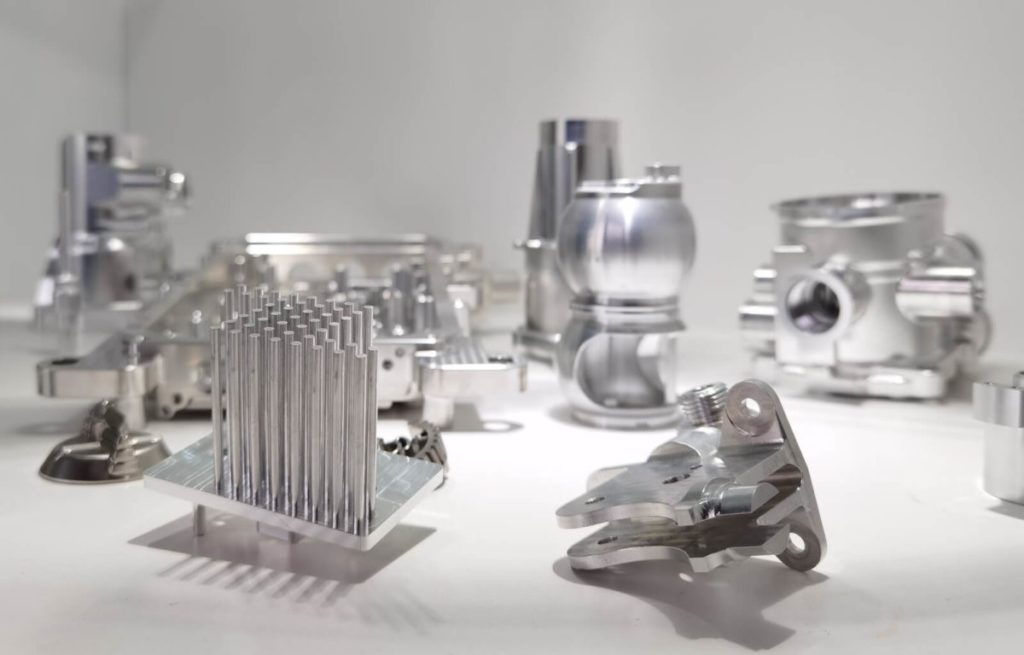
Being an excellent conductor of electricity, aluminum can transfer a good amount of heat. This makes it highly useful in the production of components such as heat sinks. In general, aluminum has important applications in the aerospace industry. It is also a great choice for making bicycle and vehicle frames.
Moreover, aluminum has several alloys, which significantly improves its mechanical properties. Also, aluminum machining is relevant for the automotive industry, especially when improving fuel economy is an important consideration. The main applications of aluminum include the following:
- Electricity-related applications – conductor alloys, generators, motor transformers, etc.
- Transportation industries – aircraft, marine vessels, automobiles, spacecraft, and more.
- Household items such as cooking utensils
- Machinery and equipment – tools, pipes, and other processing materials.
RapidDirect Manufacturing Capabilities
There’s no better place to get rapid prototyping services that use materials of the highest quality. We have a wide selection of premium materials, including aluminum and titanium, for prototyping ad production. Our aim is always to provide ultimate manufacturing solutions and get your product to market in the shortest time possible.
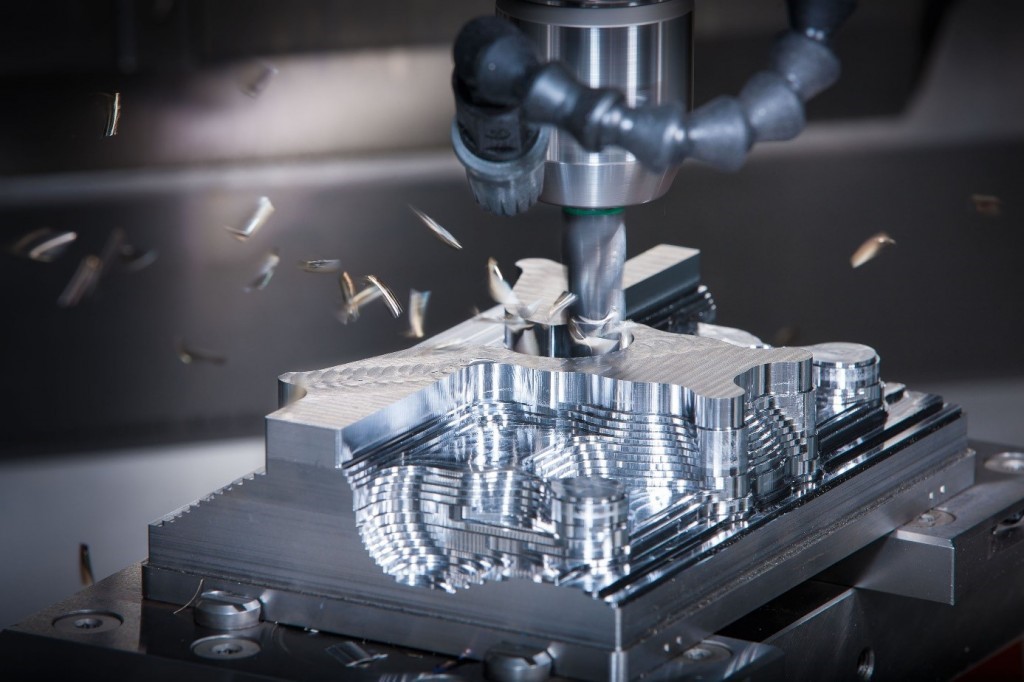
Our team of experts at RapidDirect has a vast understanding of the properties of various metals. Hence, we can offer recommendations and expert advice to ensure that you make guided decisions. Upload your design file and receive quotes within seconds.
Titanium Vs. Aluminum: Which Metal Should You Use?
CNC Materials used for machining, such as aluminum and titanium, have different properties that make them fit for different uses. With industries turning towards reducing energy consumption and getting products to market faster, materials like titanium and aluminum have become more popular.
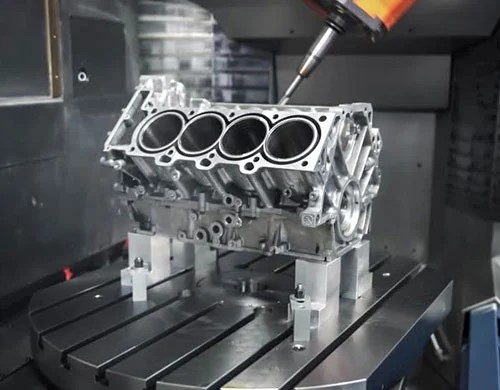
Recent research into metal alloys and surface technologies has found that these two materials have properties that help to use them in ways that were initially considered inappropriate. Before choosing between titanium vs. aluminum, there are several factors to consider. However, you must note that each of these metals has potential benefits and drawbacks. These parameters will impact your choice.
Cost
When it comes to choosing a metal for your machining purpose, the cost of production comes first. It is often cheaper to fabricate and cast aluminum than it is with titanium. Aluminum is a cost-effective metal for CNC machining and many other prototyping methods. On the other hand, titanium is characterized by high extraction and fabrication cost. This high cost limits its applications, such as in the general consumer market. However, if titanium vs. aluminum cost is not an issue, titanium is a great choice for machining, with other things in place.
Applications
More importantly, it would be best if you considered where you wish to employ your product. Will there be a need to expose the component to degrading conditions? Or does the component need to meet specific strength or weight standards? Putting these and many more into consideration will guide your choice.
While the properties of aluminum and titanium make them useful for several applications, they also have unique uses. For example, titanium finds more use in aerospace, satellite components, medical application, fixture, and marine components. On the other hand, you will often find aluminum with bicycle and vehicle frames, electrical conductors, small boats, heat sinks, and other high thermal conductivity applications.
Machinability
Your choice of metal material will also depend on the geometrics of your final prototype. It also determines the method for machining titanium vs. aluminum you will employ in the manufacture of your part. Generally, aluminum is easier to machine and process than titanium which is harder to work with. Hence, aluminum will be a perfect high-quality choice whenever parts production is required quickly.
Machining Waste
This is another important factor to consider when deciding between titanium vs. aluminum for parts production. Consider the complexity of your design geometrics. Irrespective of the material chosen, machining may be limited in some way due to complex geometrics. Therefore, milling away excess material may be inevitable. In such a case, manufacturers preferred the more inexpensive aluminum to titanium. Sometimes, manufacturers may begin prototyping with aluminum before switching to titanium for high-volume production.
Aesthetic Requirements
Although surface finishes may be part of your design, some as-milled finishes may require using specific colors. Titanium comes with a silver surface appearance which views darker under light. On the other hand, aluminum is silvery white. Depending on the material surface, it may differ from silver to dull grey.
Read more: Titanium vs Steel – Which is Better for Your Project?
FAQ – Titanium Vs. Aluminum
Both of these metals have different uses in different industries. Sometimes, you will find them being valuable in the same conditions. Your choice of metal material for prototyping will depend on the application of the final product. Other considerations include cost, strength, machinability, and more.
Titanium is much harder than aluminum. Therefore, aluminum tends to rub off in little gobs when filed, while titanium will not. Also, you can also differentiate them using their respective colors. Aluminum varies from silvery white to dull grey on different surfaces, while titanium is more of dark silver metal.
Both materials have increased durability, and you can use them for longer periods. However, titanium has an edge over aluminum when it comes to rigidity and durability. Titanium components can last for years without signs of wear and tear. Its improved corrosion resistance and ability to withstand stress allow it to last longer.
Conclusion
Titanium and aluminum are two vital metal materials in the prototyping industry. The properties of aluminum and titanium make them versatile choices for applications in several different industries. This article compared the different properties of titanium vs. aluminum. You also have various factors to consider before choosing either of these metals. For additional help, RapidDirect is always ready to help. Feel free to contact us today.


